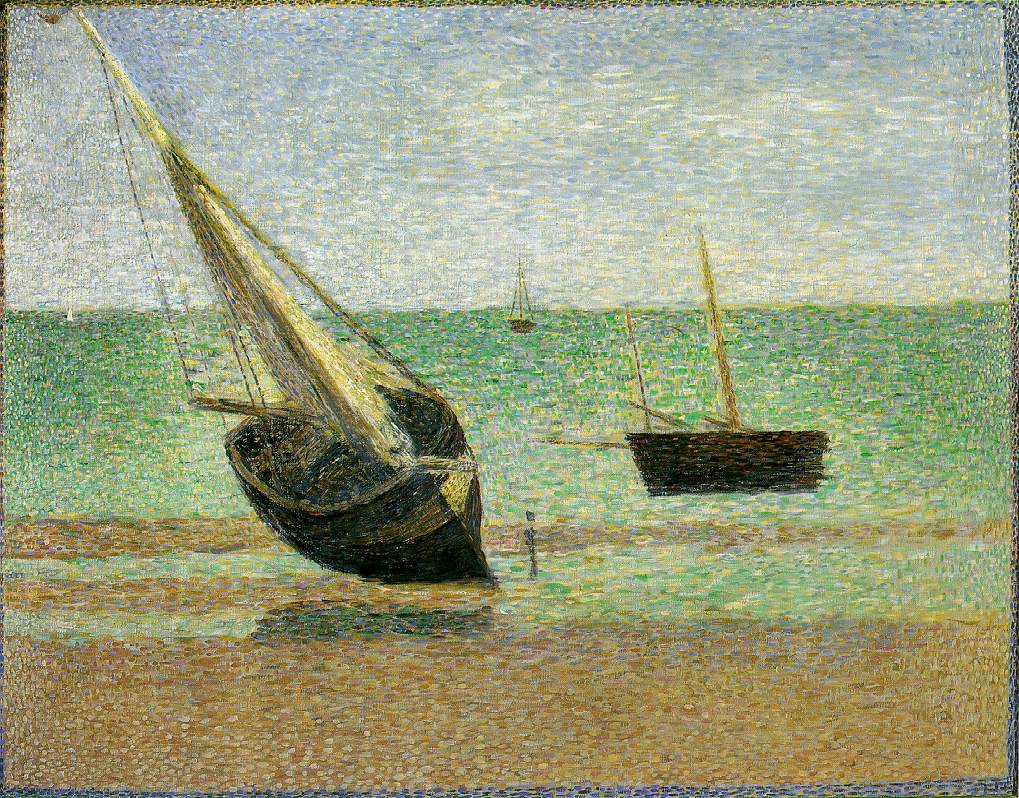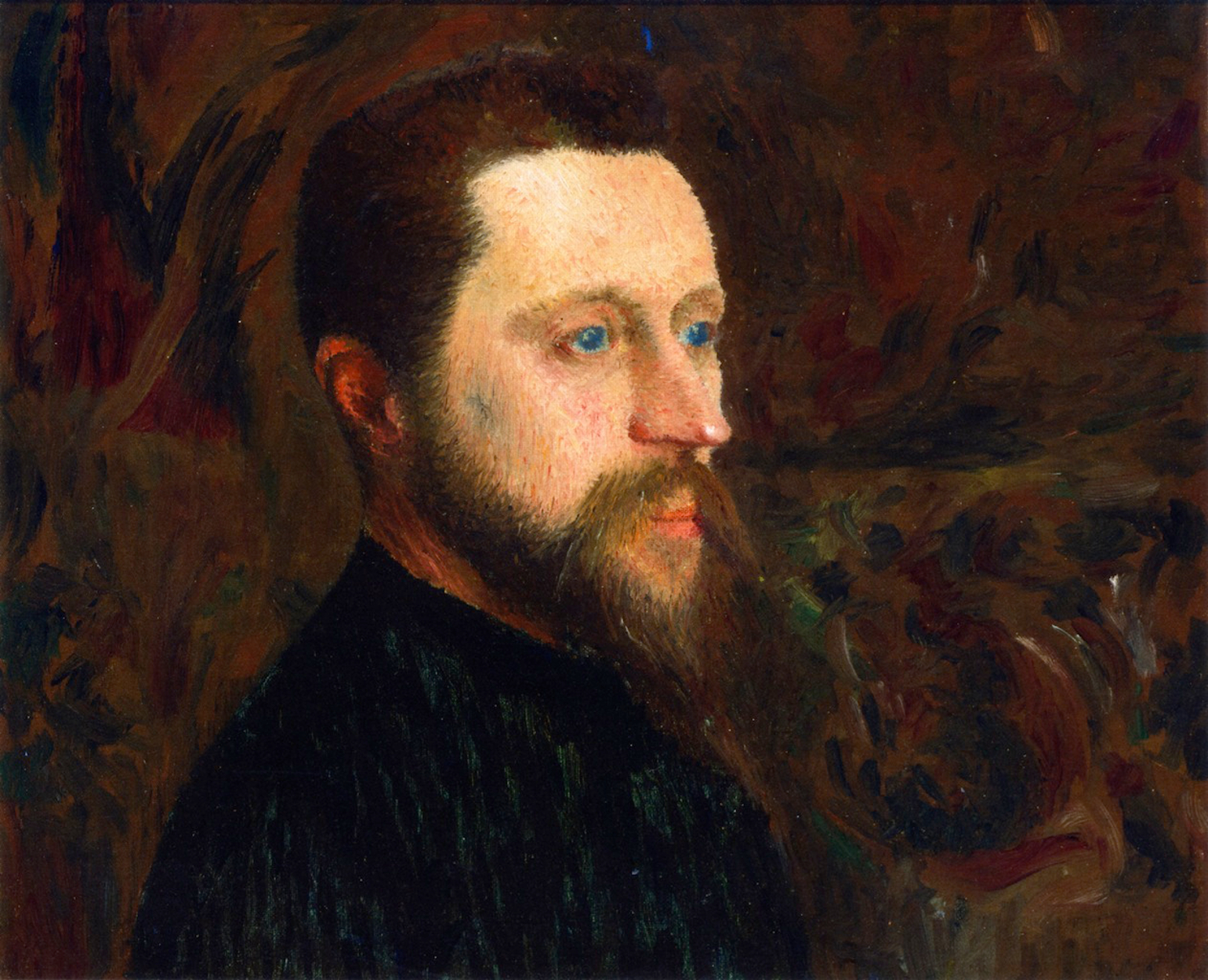



Low Tide at Grandcamp
oil on canvas • 65.5 x 81.5 cm
The story of Neo-Impressionism begins in 1884, when Georges Seurat (1859-1891) first met Paul Signac (1863-1935). Radically different in terms of their background and temperament, the two young artists met at the inaugural group exhibition of the Artistes Indépendants, which had been formed in protest against the restrictive selection criteria of the annual Paris Salon jury. Seurat was 24 and looking for sound rules by which to regulate beauty since, he argued, 'art is harmony'. A graduate of the école des Beaux-Arts, in 1884 he showed at the Artistes Indépendants his first large figure composition, Bathers at Asnières (London, National Gallery), a work rejected by the Salon jury, in which he gave a scene from modern daily life -- working-class men bathing in the Seine in an industrial suburb on the outskirts of central Paris -- the dimensions of a history painting. The works of the young Seurat are distinguished by an insistent geometry; and, from 1882-83 in his studies painted directly before the motif, a systematic arrangement of touches of colour can be discerned, bringing a uniformity to the surfaces of his compositions that stamps them with a singular unity.
 Georges Seurat
Georges Seurat